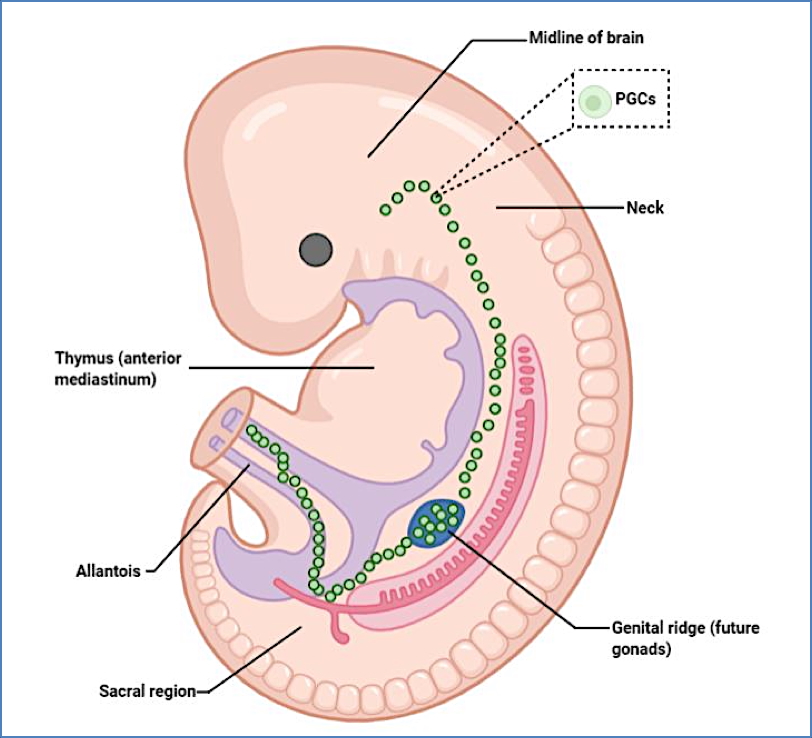Table of Contents
Overview – Embryonic Sexual Development
Embryonic sexual development refers to the coordinated series of events that lead to the formation of male or female reproductive organs. It begins with gametogenesis and progresses through genetic and hormonal signalling that directs sexual differentiation. This topic is key to understanding congenital anomalies of sex development and reproductive physiology, making it highly relevant for final-year medical students and OSCE preparation.
Gametogenesis
- Gametogenesis = Formation of gametes (sperm or ova) via meiosis, regulated by the endocrine system.
- Male gametogenesis:
- Continuous mitotic division of spermatogonia.
- Entry into meiosis begins at puberty and continues throughout life.
- Female gametogenesis:
- Meiosis begins during fetal development and arrests until puberty.
- Meiosis resumes cyclically during ovulation, and completes only upon fertilisation.
- Gametes are haploid (23 chromosomes):
- 22 somatic + 1 sex chromosome.
- Sperm: X or Y chromosome.
- Egg: Always X chromosome.
Genetic Determination of Sex
- XX = Female, XY = Male
- Y chromosome is the sex-determining chromosome.
Embryo Sexual Differentiation
Gonadal Development (Week 5)
- A gonadal ridge forms from mesodermal tissue.
- Primordial germ cells migrate to the ridge.
- Initially, the embryo is sexually indifferent:
- Has both Mesonephric (Wolffian) and Paramesonephric (Müllerian) ducts.
- Both ducts empty into the cloaca, a common embryonic chamber.

Male Sexual Development
- Presence of Y chromosome initiates testicular development.
- Testes produce:
- Testosterone → stimulates Mesonephric ducts → male reproductive tract (epididymis, vas deferens, seminal vesicles).
- Anti-Müllerian hormone (AMH/MIH) → regression of Paramesonephric ducts.
- External Genitalia:
- Genital tubercle → penis.
- Labioscrotal swellings → scrotum.
Female Sexual Development
- In absence of Y chromosome:
- No testes develop → no testosterone or AMH.
- Gonadal ridge differentiates into immature ovaries.
- Mesonephric ducts regress due to lack of testosterone.
- Paramesonephric ducts persist and form:
- Fallopian tubes, uterus, upper third of vagina.
- External Genitalia:
- Genital tubercle → glans clitoris.
- Urethral groove → labia minora.

Summary – Embryonic Sexual Development
Embryonic sexual development begins with genetically directed gonadal differentiation and proceeds via hormonal signalling pathways to form internal and external reproductive structures. The Y chromosome is the pivotal factor determining male development. For a broader context, see our Obstetrics Overview page.